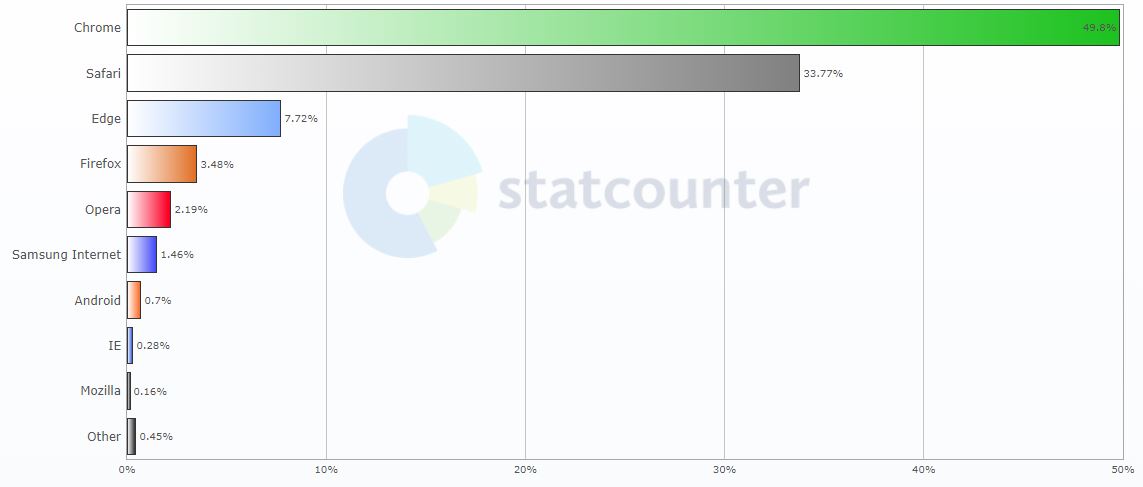What is it? Browser compatibility testing is testing that is performed to assess whether a website works properly with a range of browsers.
Why do it? Not all browser engines are created equal, so they won’t necessarily display a web page’s graphics or implement a website’s functionality exactly the same. Even though the W3C (World Wide Web Consortium, www.w3.org) does a very good job creating and distributing website standards for all aspects of how a browser should handle things, browser manufacturers are under no obligation to conform to W3C’s recommended standards, and more importantly, how fast to conform. Website technologies advance quickly and it can be difficult for browsers to keep up.
It can also be difficult for people and/or corporations to keep up. A not-insignificant number of users still swear by Windows XP, and many if not most of them are using an old Internet Explorer browser.
Furthermore, your target audience deserves consideration. Some corporations may dictate Windows + Edge, others may not have updated their equipment for 20 years. Some classrooms may have dated equipment and browsers. And some users may be in a geographic region where browser market share is markedly different than in the United States.
How to do it? Consider your audience and browser market share (see figure, complements of gs.statcounter.com) to determine a hit list of browsers that you need to support. Then give us the URL, and we’ll take it from there.
US Browser Market Share, Aug 2022-Aug 2023

Browser market share, years 2022-2023, United States, courtesy of gs.statcounter.com
